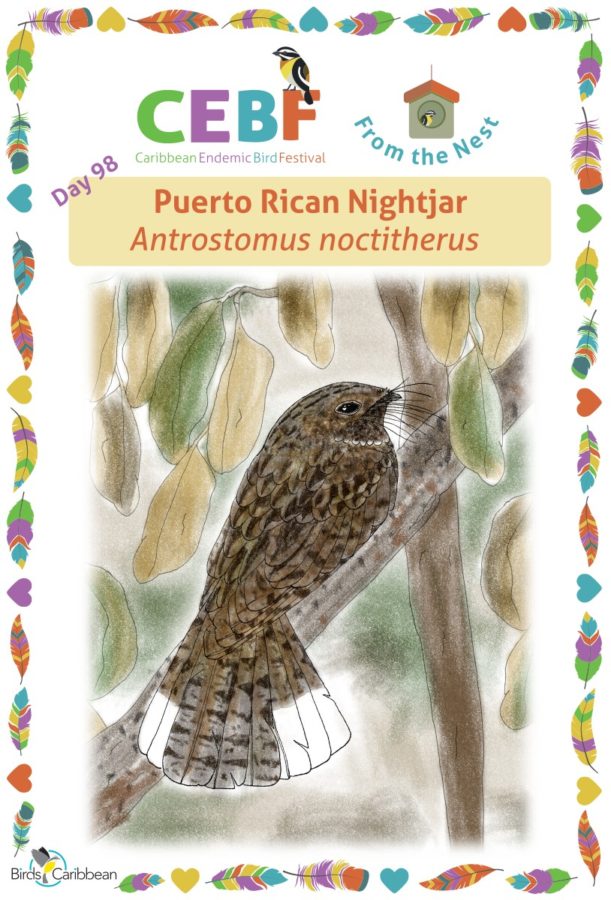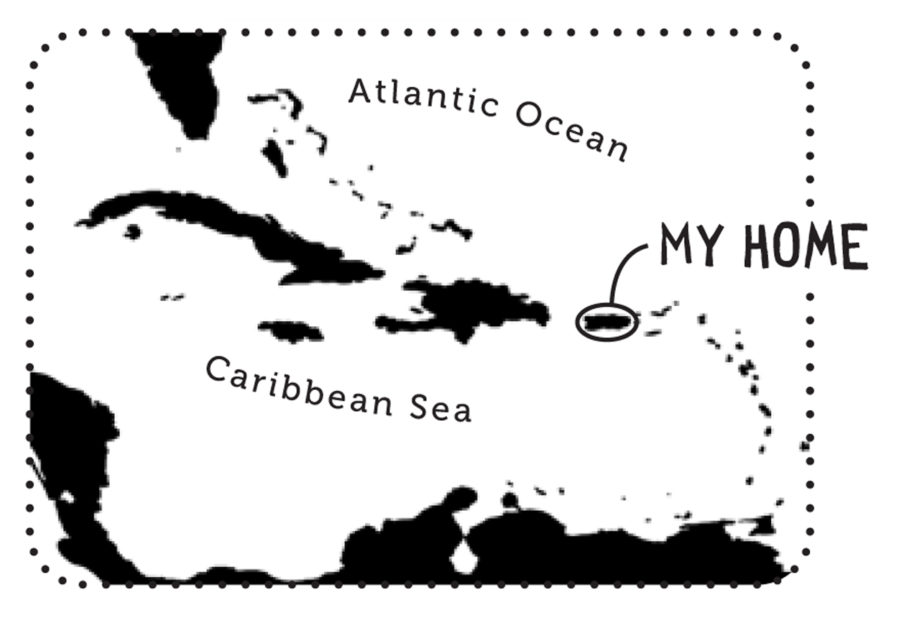Celebrate the Caribbean Endemic Bird Festival (CEBF) with us! Our theme in 2022 is “Loving Birds is Human Nature”. Have fun learning about a new endemic bird every day. We have colouring pages, puzzles, activities, and more. Download for free and enjoy nature with your family at home.
Endemic Bird of the Day: Puerto Rican Nightjar
This is how the Puerto Rican Nightjar got its generic name, Antrostomus – combining the Ancient Greek word “antron,” meaning “cavern” with ‘stoma,” meaning “mouth.” In the late evening, early morning, or at night, this endemic bird feeds on moths and other large insects. It snares them out of the air with that gaping mouth, which has modified feathers called bristles, used to detect insects in flight.
The Puerto Rican Nightjar is cryptically colored; it camouflages itself, resembling leaves and bark, with mottled gray, brown, and black plumage and some reddish tones. Males have a black throat bordered by a white band, and white outer tail feathers. Females have buff-colored throats and outer tail feathers. They are ~22-23 cm in length and weigh ~ 40-41 grams.
Where will you find this rather mysterious bird? If you look closely enough, you will find Puerto Rican Nightjars mainly in dry coastal and lower montane forests with open understory and abundant leaf litter. During the day, they roost on the ground or on tree limbs, perching along the branch rather than across it, blending in perfectly with their surroundings. Heard more often than seen, their song is a repeated “whip, whip, whip, whip…”
This species nests between the months of February to July. Puerto Rican Nightjars do not build a nest; the female lays eggs directly on the ground on a layer of leaf litter. She lays 1 to 2 buffy brown eggs covered with brownish-purplish spots. Both parents incubate the eggs and care for the chicks, taking turns brooding and feeding them. When a predator approaches, the parents try to distract it, flapping their wings and tail as if wounded, to draw the predator’s attention away from the chicks. Juvenile nightjars remain in their parents’ territory for some time after fledging. Learn more about this species, including its range, photos, and calls here.
Colour in the Puerto Rican Nightjar
Download our West Indies Endemic Bird colouring page. Use the photos below as your guide, or you can look up pictures of the bird online or in a bird field guide if you have one. Share your coloured-in page with us by posting it online and tagging us @BirdsCaribbean #CEBFfromthenest
Listen to the song of the Puerto Rican Nightjar
The calls of the Puerto Rican Nightjar are an emphatic, high-pitched and repeated “whip, whip, whip“
Puzzle of the Day
Click on the image below to do the puzzle. You can make the puzzle as easy or as hard as you like – for example, 6, 8, or 12 pieces for young children, all the way up to 1,024 pieces for those that are up for a challenge!
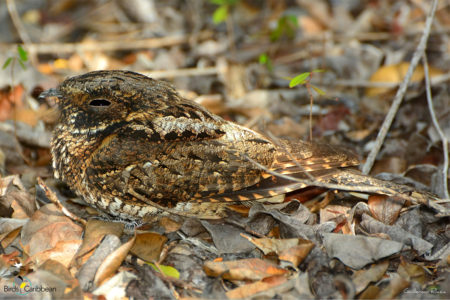
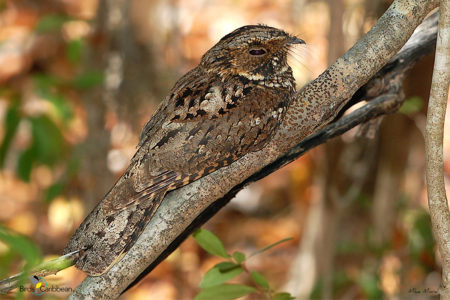
Activity of the Day
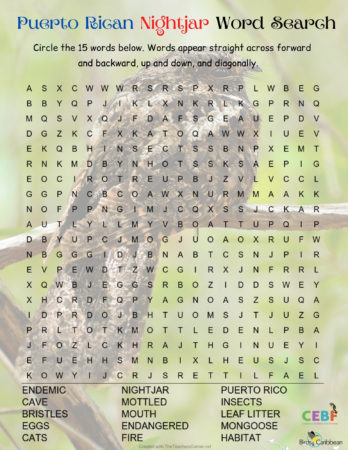 FOR KIDS: Can you find the words in our Puerto Rican Nightjar word search? Circle the words as you find them and remind yourself of some of the interesting facts about todays endemic bird. There are 15 hidden worlds for you to look for! Remember the words can appear forwards and backwards, and can be horizontal, vertical and diagonal! Need some help? Or want to check your answers? You can see where all the words were here.
FOR KIDS: Can you find the words in our Puerto Rican Nightjar word search? Circle the words as you find them and remind yourself of some of the interesting facts about todays endemic bird. There are 15 hidden worlds for you to look for! Remember the words can appear forwards and backwards, and can be horizontal, vertical and diagonal! Need some help? Or want to check your answers? You can see where all the words were here.
FOR KIDS AND ADULTS: Enjoy this video of a Puerto Rican Nightjar in the wild!
Puerto Rican Nightjars blend in beautifully with their environment, they are active mainly at night. This means that they can be very hard to spot as they sleep and nest amongst the leaf litter on the ground. Luckily, we have shared this video with you so you do not have to find this difficult to see bird. This Puerto Rican Nightjar is on a nest – keep an eye out for the tiny nightjar chicks!

